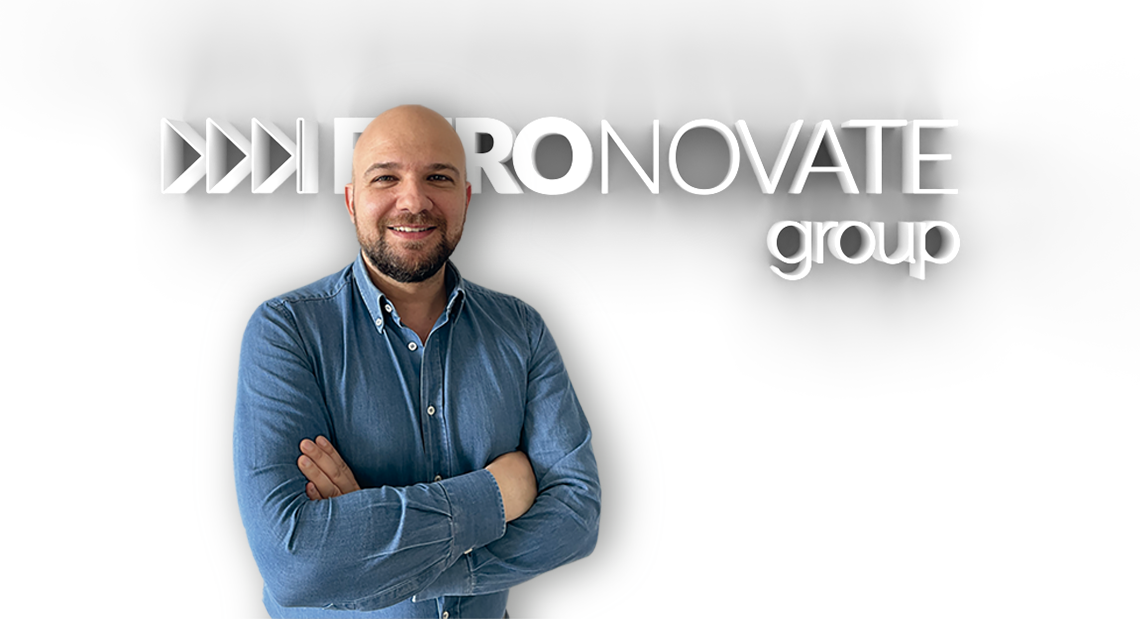Euronovate Group's innovation, interview with Fabio Gatti
Interview published in Edge9.Hwupgrade.it on 17/05/2022
Interview with Fabio Gatti, Euronovate Group CTO, to talk about innovation and technology
Among Euronovate Group technologies we also find a solution for face-matching: in addition to payment services (PSD2), in which other fields can it be adapted? How is the privacy issue handled in this case?
We are working on our own proprietary face match solution which will be available by 2022, in the meantime we are collaborating with some partners who have visibility at a European level.
Today we use face match all the time, just think of smartphones, where it is used to unlock the device or to authorize various operations.
For example, our OnBoarding solutions combine it together with Liveness techniques to validate the copy of the documents provided by the user (identity card or passport) and to guarantee the "human" presence of the customer in front of the terminal from which he is operating.
As far as privacy is concerned, the GDPR is clear, for biometric data which are defined as "particular" data, first of all a specific consent is needed for treatment by the user/customer of the system.
For the system it is necessary to apply (as for all systems that process personal data after all) the privacy criteria by design and by default and this is the task of the designer who prepares the architecture of the solution.
Who will then use the solution, i.e. who installs our products in their own environments to offer a service to their customers, given the innovative nature and the particular data used, will have to submit the whole system to an "impact assessment" (DPIA) which is fundamentally linked to the principle of accountability which falls on the Data Controller because it allows him to demonstrate the effective implementation of technical and organizational measures aimed precisely at data protection.
How does Liveness technology work and how reliable is it?
There are two types of liveness, the active one and the passive one:
The active one is based on explicit requests for voluntary actions to be done in front of the camera; a smile, the head tilted, following objects on the video with the eyes, then through complex algorithms, the system is able to interpret the video stream and verify that those actions have really been performed.
The passive one, on the other hand, is based on involuntary actions, analysis of facial micro-movements, background analysis and other environmental information.
Liveness complexity consists on understanding whether the "authentication" process is real or if there is an attempt to forge it.
Counterfeiting attempts are usually made through multimedia devices such as smartphones, tablets, laptops, etc. that can "reproduce" images/videos of the person's face whose identity you want to "steal".
This problem is very difficult to deal with using traditional computer vision algorithms, therefore the basis of the most modern algorithms (including ours) is deep learning, a branch of machine learning which consists in the use of artificial neural networks.
Hundreds of thousands of images with unaltered authentication examples and equally counterfeit examples are used to train the model. Once trained, during the verification phase the model analyzes sequences of frames and returns a value that represents the probability that the user is actually live.
Among your solutions there is also a tablet based on EMR technology for electronic signature: in which areas is it used?
We were born in 2012 by designing and manufacturing the first 10" signature device based on EMR technology. Today almost all financial institutions in Italy and many in Europe and outside Europe use our tablets to get their customers to sign, because where c 'is a physical contact with the customer, it remains the solution with the most similar user experience to a paper signature that a person can have.
In this case the "biometric" data of the signature are collected, encrypted and inserted in the PDF document just signed, and in the event of a dispute, the approach is the same as that which occurs with the card, with the difference that the expert who will The graphometric analysis of the signature will have a considerably higher amount of data available, which allows for a certainly more accurate analysis.
The main use in our business is signature, but the same technology in the past has been used for the creation of graphic tablets for drawing (Pixar also uses them for animated films).
We are also very proud because on our journey we have met many unique professionals and colleagues full of initiative, for example a few years ago, a colleague created a company where they created a software that through the use of devices with EMR technology ( and more), they helped doctors formulate diagnoses on children potentially affected by dysgraphia. This is a project that has made us very proud of what we have managed to generate as a context.
Euronovate Group solutions are well suited to the needs of the Public Administration: have they already been adopted by some Italian PA?
Euronovate Group solutions are essential for the PA, wherever there is a need to collect signatures and consents. In the healthcare sector they are useful for the certification medical documentation certification (professional side) and for the signing and collection of privacy consents (patient side): In 2021, in the context of the anti COVID vaccination, the ASL Avellino implemented our products with the objective of speeding up the vaccination process through digitalisation, facilitating the stages of booking appointments and collecting patient documents (consent to privacy and the medical history form), reducing waiting times and guaranteeing the digitization of information with high security standards.
Share this
You May Also Like
These Related Stories
.png)
Euronovate Group is looking for new markets for digital signature
.png)
Euronovate Group 10th Anniversary kick-off

